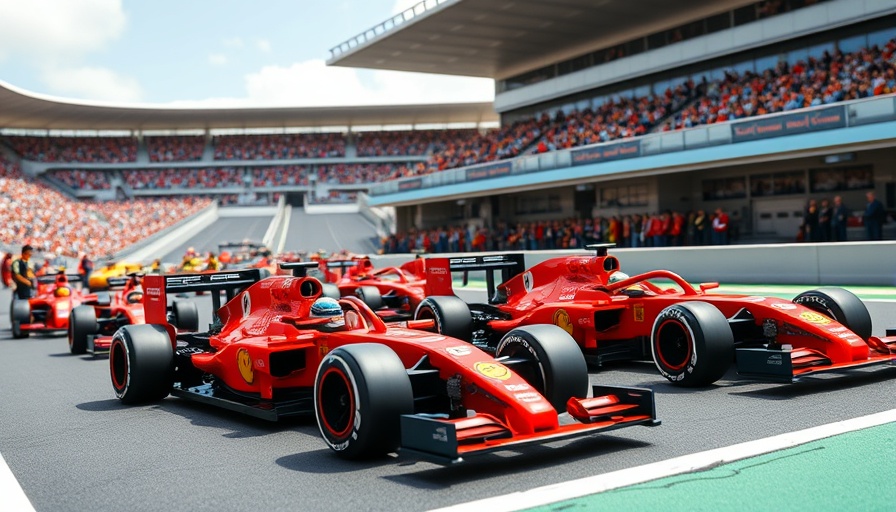
The Intersection of Play and Performance: LEGO Meets F1
At the recent Miami Grand Prix, LEGO unveiled an astonishing feat of engineering and creativity: ten life-size Formula 1 cars made entirely from LEGO bricks. Each car captured the vibrant team colors and intricate designs familiar to racing fanatics, all while embodying the playful spirit of LEGO. This unique collaboration brings together the worlds of racing and creative play, showcasing the lengths to which both brands are willing to go to engage their respective audiences.
The Ambitious Build
Constructing these impressive vehicles was no small task. A dedicated team of 26 builders poured 22,000 hours into the project, utilizing over 4 million bricks in the process. Each car weighed twice as much as a standard F1 racer, comprised of approximately 400,000 LEGO pieces. While LEGO is synonymous with imaginative play, this project reflects a clever intertwining of artistry and engineering. The structures were built around a sturdy metal frame, securely held together with glue, and interestingly featured real electric motors and tires to ensure they could traverse the racecourse.
A Driving Experience Like No Other
Perhaps the most exciting aspect of this endeavor was not merely the construction itself but the opportunity to drive these LEGO cars around the Miami circuit. During the driver’s parade, F1 stars like Oscar Piastri and Lando Norris took turns testing their oversized vehicle replicas. The true thrill lay in blending the renowned adrenaline of F1 racing with the nostalgia and creativity of building with LEGO. Emily Prazer, F1's chief commercial officer, remarked that this partnership invites fans to explore the intricacies of Formula 1 through a new, playful lens.
A Surprising Brand Synergy
It might seem that F1 and LEGO operate in distinctly different markets, yet their collaboration reveals unexpected touchpoints. Traditionally, F1 attracts a demographic that skews older and more male-dominated, while LEGO appeals to a diverse age group that includes children and families. Julia Goldin, LEGO's chief product and marketing officer, highlighted that the overlap in fan interests could foster a new generation of racing enthusiasts. As families engage with both F1 and LEGO, this partnership could cultivate a lifestyle where play meets high-speed excitement.
The Future of Playful Innovation
As brands continue to innovate and explore avenues for engagement, the LEGO and F1 partnership signals a future where playful experiences can enliven traditional sports. Fans not only get a chance to witness the speed and spectacle of racing; they can engage with it on a tactile level, replicating these intricate machines piece by piece. This engaging brand strategy not only broadens the reach of both franchises but elevates how audiences interact with sports and entertainment.
Final Thoughts: Building Connections
The marriage of LEGO and Formula 1 serves as a reminder of how creative endeavors can reshape perceptions and encourage interactions between different demographics. By inviting fans to step into the world of racing through a creative lens, the partnership opens doors to new possibilities within both brands. This synergy stands as a model for how innovative thinking can drive engagement and foster connections in unexpected ways.
For business owners, operators, and managers looking to forge new paths in engagement strategies, the LEGO-F1 alliance is an inspiring case study. Understanding the dynamics between two different audiences and the creativity that can emerge might just lead to breakthrough marketing approaches for your business.
Get Help Selecting a Preferred Provider
 Add Row
Add Row  Add
Add 




Write A Comment